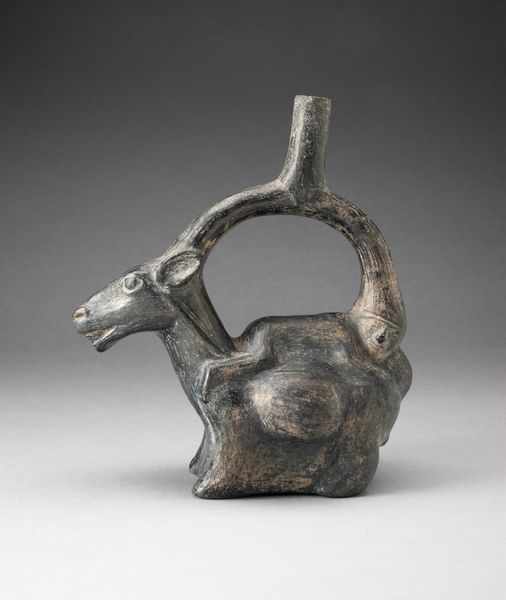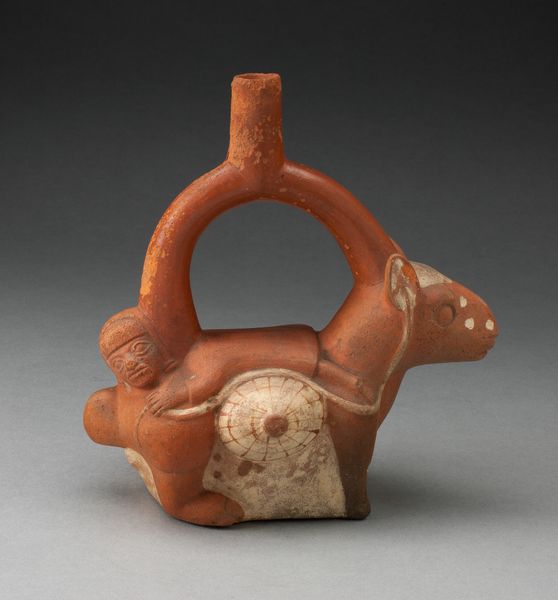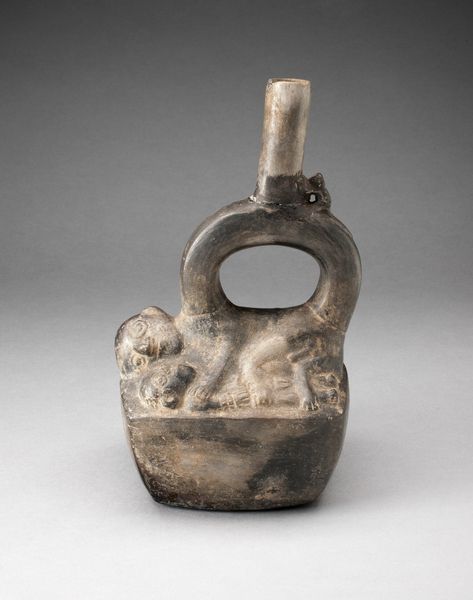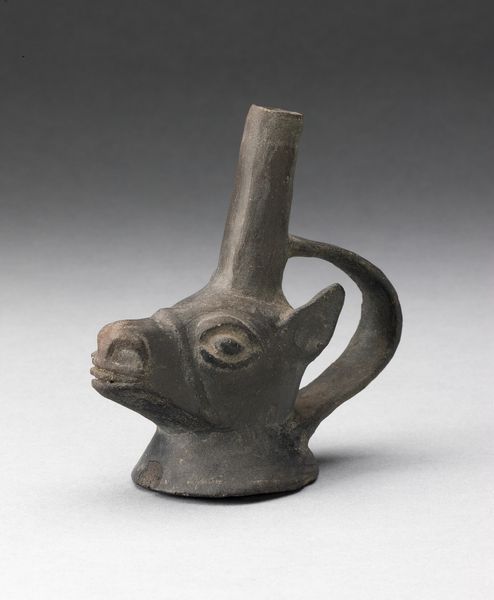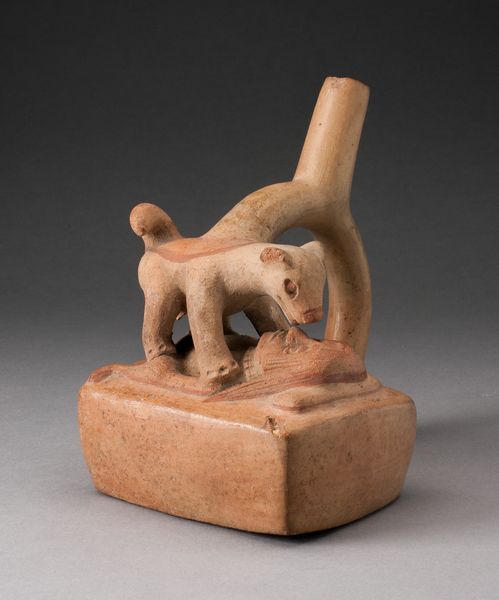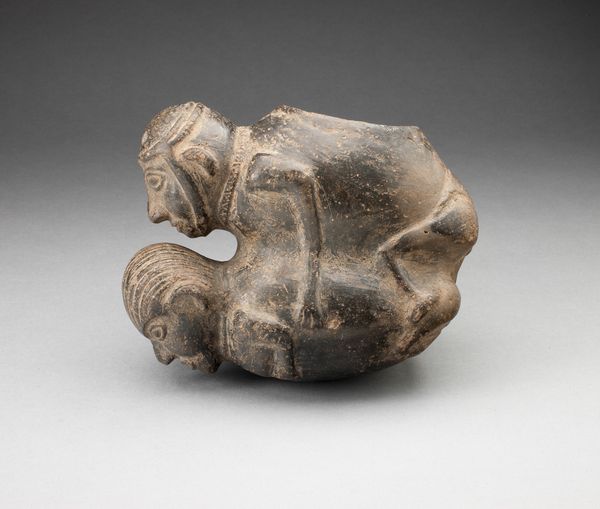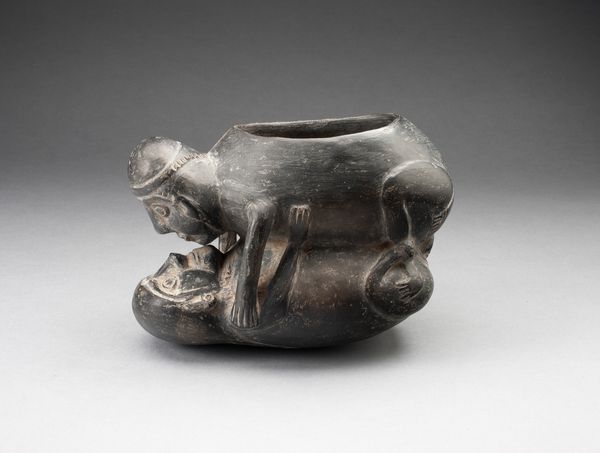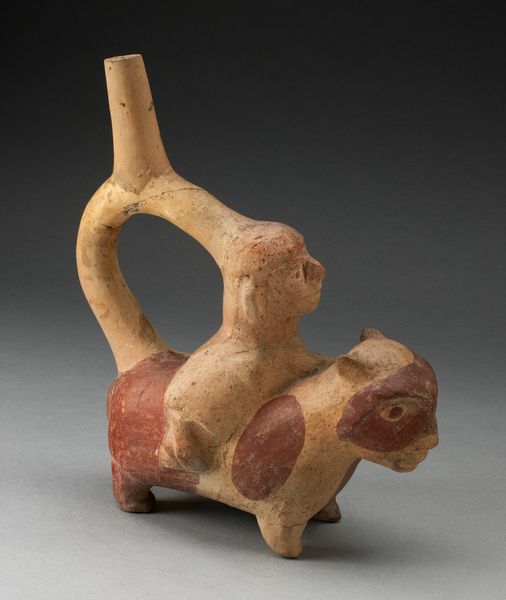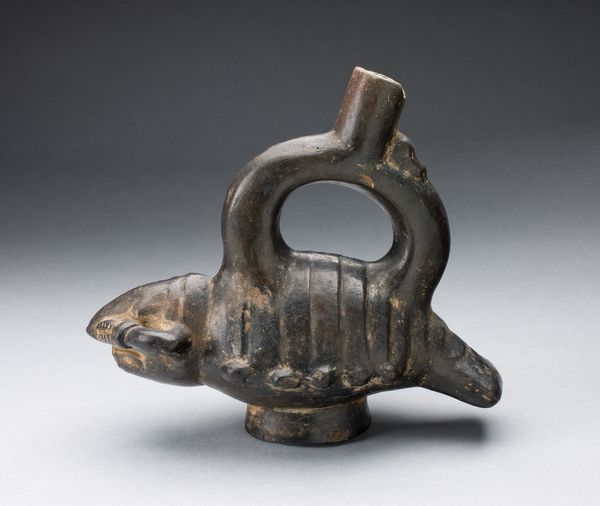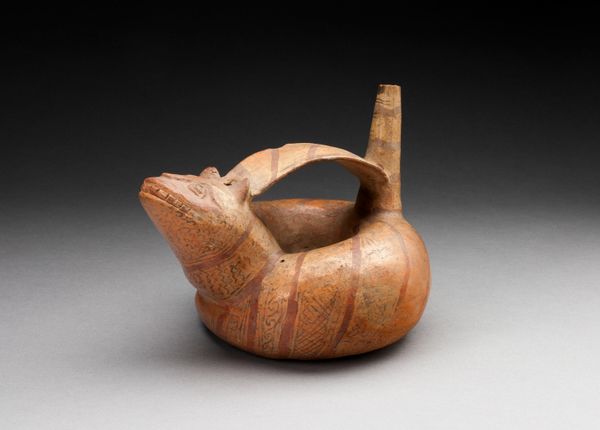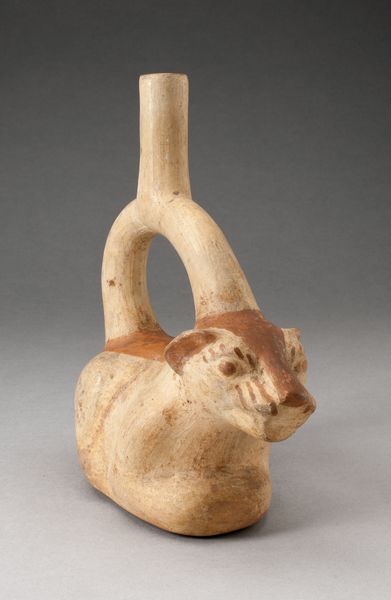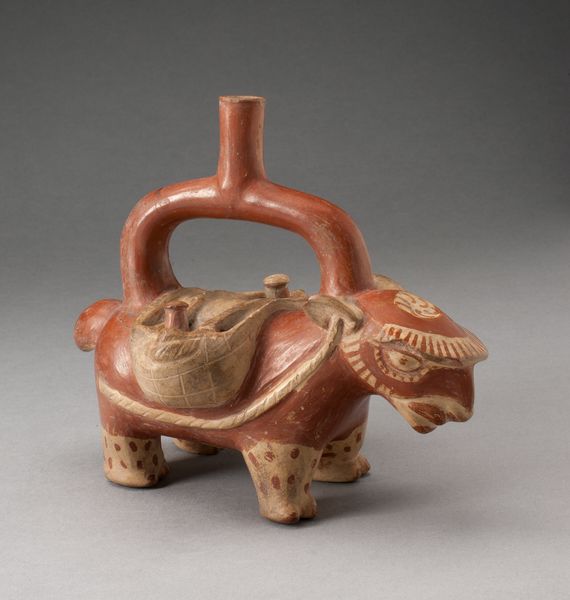
Stirrup Spout Vessel Depicting Frogs Mating Possibly 1100 - 1470
0:00
0:00
ceramic, sculpture, terracotta
#
ceramic
#
figuration
#
sculpture
#
terracotta
#
indigenous-americas
Dimensions: 20 × 17.5 cm (7 7/8 × 6 7/8 in.)
Copyright: Public Domain
Editor: Right in front of us is a piece titled "Stirrup Spout Vessel Depicting Frogs Mating," believed to be from the Chimú culture, possibly created between 1100 and 1470. The Art Institute of Chicago holds this ceramic sculpture. The, ahem, *directness* of the subject matter is certainly striking! How should we interpret this scene? Curator: For me, understanding this vessel means engaging with its materiality and the social context of its creation. Consider the labour involved in extracting, shaping, and firing the clay, and how the potter's hands directly shaped this narrative. What can the clay itself, this readily available material, tell us about Chimú beliefs and interactions with the environment? Editor: I hadn't thought about the material speaking to those specific cultural beliefs. How might a seemingly explicit depiction be interpreted within its society? Curator: Well, the frogs and their act might signify fertility, agricultural abundance, or the cyclical nature of life itself. Furthermore, examining similar ceramics might highlight the division of labour within Chimú society. Were these vessels produced by skilled artisans who specialised in specific forms or narratives, perhaps signifying higher social standing or controlled output? Editor: It's fascinating to consider the socio-economic aspects embedded in this vessel. The act itself almost becomes secondary to understanding production and its implications. Curator: Precisely. The vessel serves as a valuable artefact to help us examine pre-Columbian methods of resource utilisation, commodification, and even control, offering an unconventional lens into social hierarchies of ancient America. The frog, mating or not, reminds us of the world from which the material came. Editor: Thanks! This focus has really changed the way I initially viewed this ceramic work. Curator: And for me, your reading invites us to revisit how ‘explicit’ or not art like this might really be, when placed back within earlier systems of material culture.
Comments
No comments
Be the first to comment and join the conversation on the ultimate creative platform.
